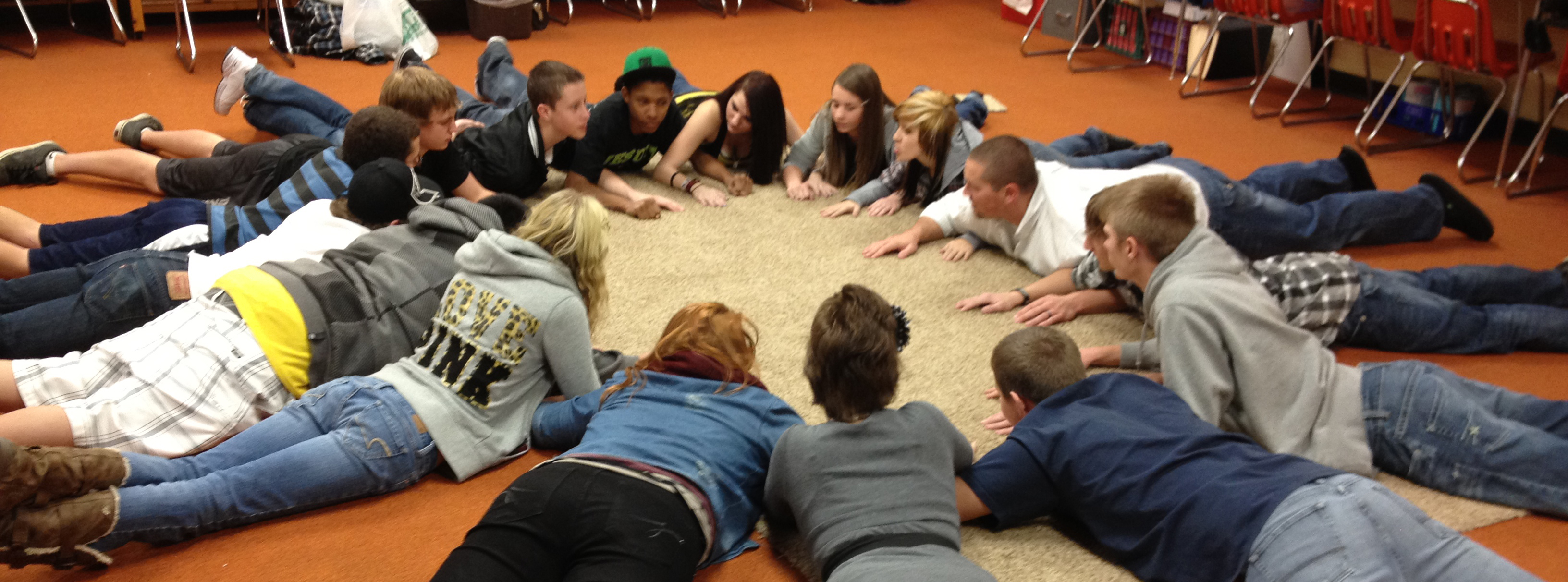
Everyone begins to set goals as the new year starts, but how many of us really take them to heart? Are they something we put by our bedside and relentlessly review every day? If you are one of those people who can maintain, my hats off to you! For many, it is a passing thought that comes and goes, as seen by packed gyms on January 1st, and ghost gyms by February 1st. One of the reasons why resolutions often don’t work is because it can be simply a passing whim, a trend, a thing to do in the moment. The truth is, as many of us know, anything worth our time becomes a lifestyle change. It is something that is more than a whim, something we make a commitment to. So how do we do that for the classroom? How do we affect change in our classrooms and with our students?
1.Recognize the need
Realize that something isn’t how you want it.
The first step to making change is to recognize that although things are going well and class is ok, you want more. There’s something more you know you and your students are capable of doing.
- Seek the possibilities
Examine your philosophy, thoughts & beliefs. What is it that you truly want for your students? At the end of the day, in your gut, if everything was stripped away and you could only say, ‘I want this one thing for my students’, what would it be? Think back to why you began teaching in the first place. For some of us that’s longer than others 😉 What drove you? What still drives you?
What is it you want to feel for you? How do you want to feel at the end of each day? Seek the opportunities that you feel like best fit your values.
- Take the first step
Once you’ve found a values based fit, take one step. Some might say, jump and leap into it! Absolutely! If that is the kind of person & personality you are, don’t hesitate, jump in! However. there are so many memes and quotes about this most difficult step. And for good reason, it is scary. However:
‘You don’t have to see the whole staircase, just take the first step.”‘ Martin Luther King, Jr.
‘The journey of a thousand miles begins with one step.’ Lao Tzu
What these quotes have in common is that no one is asking, nor suggesting, you change everything. They are talking about taking one step, putting one foot in front of the other. You don’t have to see the end goal.
‘The only impossible journey is the one you never begin.’ Tony Robbins
Unless you take that first step you will never know what could have been.

- Believe in the change
Once you begin to try new things students will react in a variety of ways. Some will love it and some will hate it. Know that you have chosen the steps that you want to take to get to a deeper and bigger picture of what you envision for you and your students. Know that any change at first is difficult and that it takes believing in it to keep going. Look at other examples, hear how other teachers have overcome their challenges and keep believing.
- Stick with it
Often times if we try something new, we give up after it doesn’t work right away, or even after a few tries. If something is worth doing, it is worth sticking with. Keep going. There are always good and bad days. Anything that is going to bring about real change requires grit and sticktoitiveness. It does not happen overnight. You have to stick through the things that don’t work and believe that it will. Because it does. It works in powerful ways, and you will begin seeing the relationships, connection, community and results that you want.
- Make it yours
This often overlooked step requires vulnerability and authenticity. Any time we find something new or see someone new, we want to emulate that person or belief. The truth is that it will never work until you make it your own. You have to find your way to bring any strategy or idea to life for you and your students. There are no shortcuts. The truth is that real change, true transformation requires time, energy and relationships. Teaching is all about connection and truly getting to know our students. What they think, feel, like, dislike. What are their lives like? Who do they interact with? And along with that, who are you? You have to bring your authentic self to the table in order to create a space where students can do the same.
- Find support & share
No one can remain doing anything in isolation for very long. Find the community that shares your values and ideals and begin to communicate and interact. Share your questions and stories. Being willing to be vulnerable will allow you to make connections like you have never felt before. There is power and solidarity in knowing that you are not the only one who is going and has gone through similar situations, reactions and feelings.
- Last, but not least, CELEBRATE! It is so important to stay positive, celebrate the little things and the big things. I know I often get bogged down by the one thing or student who I feel like I can’t reach. Accept it, know it, keep trying and also realize that there are so many other students and successes that are just sitting there ready for you to celebrate and embrace. Talk positively to yourself, support yourself. Find one thing that you can do or say to yourself every day that will help you realize all the positive that is happening. Because it is always there.
Believe in yourself, stick to it and maintain your connections and support. Not only will this work empower you, it will empower your students and those around you.
Have an amazing 2020, with all the feels that it will bring. Check in with these change elements and see how and where you feel like you are right now and what you need to keep going. Stay the course and let’s celebrate together!!
